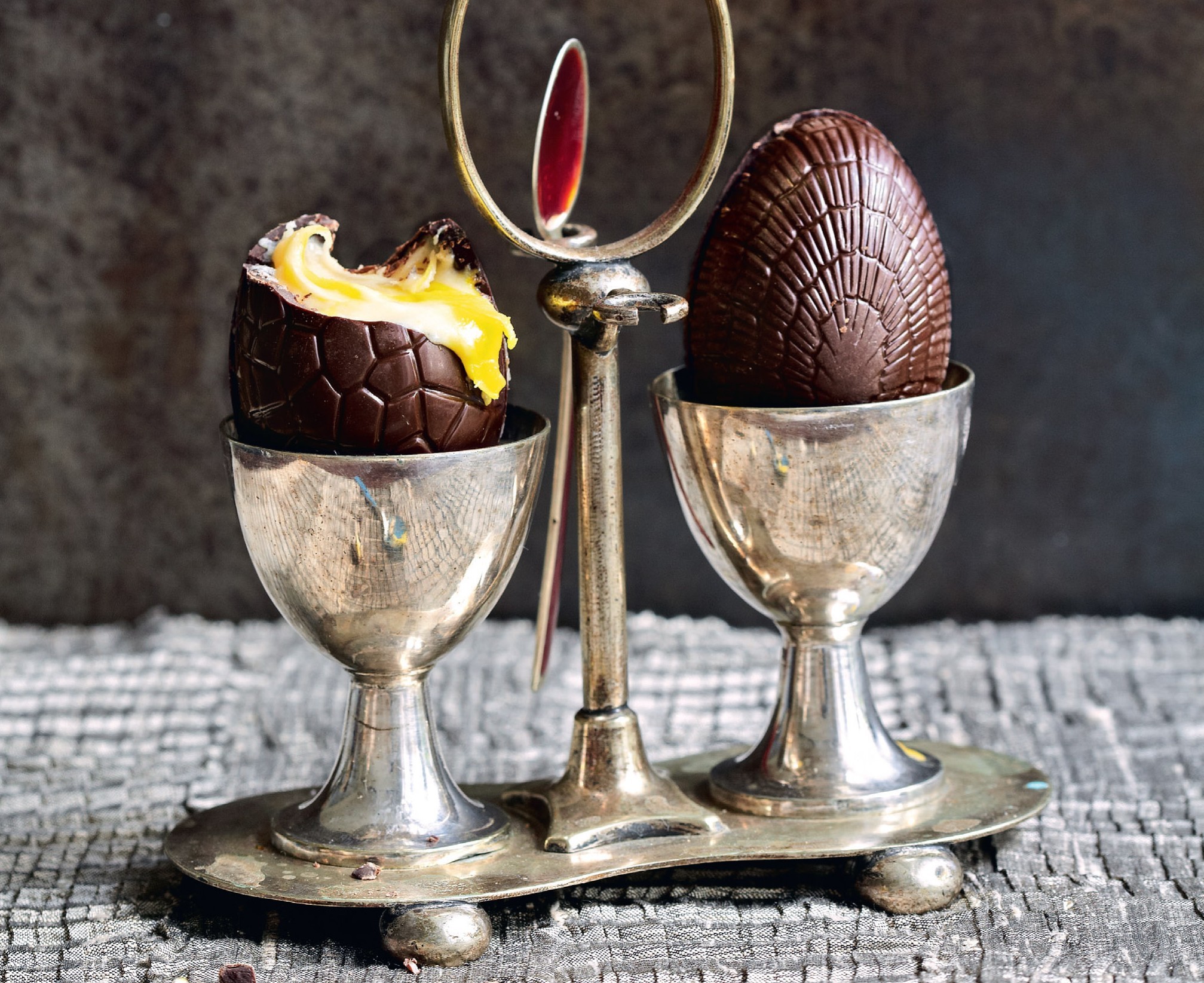
These chocolate eggs make lovely presents for Easter Sunday next week.
When you’re melting your chocolate, you also need to ‘temper’ it. This simply means it will stay glossy and have an authentic ‘snap’ rather than crumble away.
There are various complicated ways of doing it but we’ve gone for the microwave method – by far the easiest.
You’ll need:
Fondant filling
200ml golden syrup
100g unsalted butter
325g icing sugar, sifted
1⁄4 tsp salt
1 tsp vanilla bean paste
Yellow food colouring paste
For the coating
450g plain chocolate, chopped
Tools
12 x 5.5cm Easter egg moulds or 1 large mould
2 piping bags
Method:
1. In a medium bowl, whisk together the golden syrup, butter, icing sugar, salt and vanilla bean paste until well combined.
2. Place a quarter of the mixture in a bowl and mix in food colouring, a drop at a time, until you reach the desired colour of ‘yolk’. Refrigerate both mixtures for 30 minutes.
3. Temper the chocolate by melting it in the microwave at 800-1000 watts, checking and stirring every 15 seconds. Be careful not to let it overheat.
4. When it’s almost totally melted, remove from the microwave and stir to totally melt the rest.
5. Fill the egg moulds with the melted chocolate. You can use a pastry brush for this. Save any excess chocolate.
6. Leave to set, then fill the egg moulds once more to give a nice thick shell of chocolate. Leave to set again, then remove the chocolate shells from the moulds. Each chocolate mould will make half an Easter egg shell.
7. Remove the fondant mixtures from the fridge. Spoon the white and yellow mixtures into two separate piping bags with the ends snipped off. Pipe the white fondant into six of the chocolate moulds, filling them to about three quarters of the way up.
8. Pipe a blob of the yellow mixture into one half of each mould.
9. Using a hot knife, warm the surface of a mould, then place another mould on top to seal and make a complete Easter egg shell. Repeat with the remaining moulds.
Recipe taken from Chocolate by Molly Bakes, published by Square Peg.
READ MORE

Enjoy the convenience of having The Sunday Post delivered as a digital ePaper straight to your smartphone, tablet or computer.
Subscribe for only £5.49 a month and enjoy all the benefits of the printed paper as a digital replica.
Subscribe